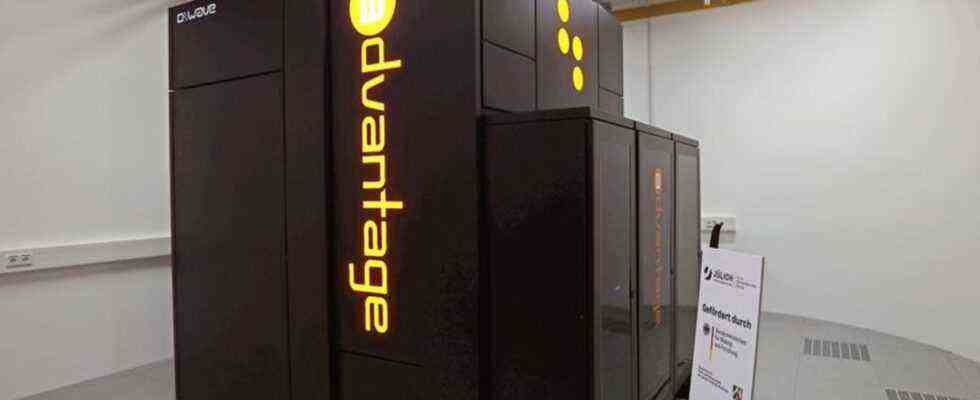research
Launch of the new quantum computer at Forschungszentrum Jülich
A new quantum computer is located in a vibration-free building at Forschungszentrum Jülich. Photo: Oliver Berg/dpa
© dpa-infocom GmbH
The Federal Research Minister speaks of a quantum leap. The research center Jülich itself speaks of pioneering work in the development of the information technologies of tomorrow in view of a new type of computer.
A new type of high-performance quantum computer went into operation for research purposes at Forschungszentrum Jülich on Monday. The system developed in Canada will be part of the existing infrastructure for quantum computing in Jülich.
Scientists from all over Europe thus have access to a machine park with computers of different levels of technological maturity.
Federal Research Minister Birgit Stark-Watzinger (FDP) spoke of a quantum leap. “Quantum technologies can provide a big leap forward,” said the minister. As areas of application, she named model calculations for climate research, bug-proof communication, planning traffic flows in real time, the development of new medical agents or the analysis of complex processes on financial markets. The minister also said that Germany and Europe have to catch up on quantum computing.
Special foundations cushion vibrations
Since these computers need a vibration-free location, a new building with two machine halls was built in Jülich. The halls have special foundations that absorb vibrations. The processors also have to be extremely cooled. “JUNIQ” stands for Jülich user infrastructure for quantum computing. The research center is located to the west of Cologne near the Hambach lignite opencast mine.
The research center spoke of pioneering work in the development of tomorrow’s information technologies. Quantum computers work differently and are considered to be much more powerful than conventional mainframe computers. Traditional computers work with bits. A bit can only have two states: “One” and “Zero” or “On” and “Off”. Quantum computers, on the other hand, work with qubits («quantum bits»). A qubit can not only represent “one” and “zero”, but theoretically an infinite number of states in between and all at the same time.
The main research areas of the research center are energy, information and bioeconomy. 2,669 scientists are currently working there. The research center is funded 90 percent by the federal government and 10 percent by the state of North Rhine-Westphalia.

